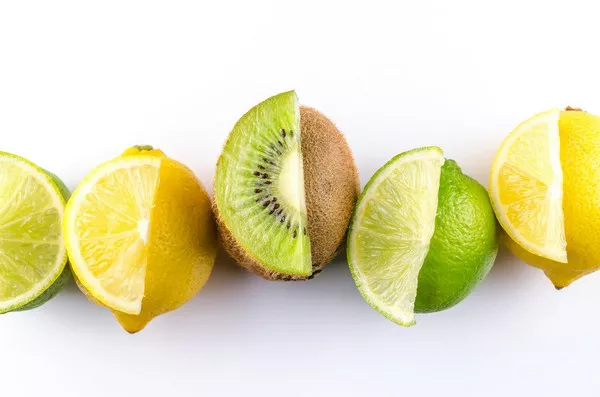The pursuit of clear, smooth skin often leads individuals to explore a myriad of remedies for scars. Among these options, vitamin E emerges as a popular contender due to its reputed skin-nourishing properties. Yet, a common dilemma arises: Is it more effective to use vitamin E oil or cream for treating scars? In this comprehensive article, we delve into the science behind vitamin E’s impact on scars and explore the merits of both oil and cream formulations.
Vitamin E’s Role in Scar Management
Vitamin E, a potent antioxidant, plays a pivotal role in skin health. It’s believed to aid in wound healing and reduce the appearance of scars. This vitamin’s ability to neutralize free radicals, which contribute to tissue damage, makes it a sought-after ingredient in scar treatments. Vitamin E is thought to support collagen production and promote healthy skin regeneration, potentially leading to improved scar texture and fading.
SEE ALSO: 5 Vitamins with Effective Healing Powers for Scars
Vitamin E Oil vs. Cream: The Texture Dilemma in Scar Treatment
When it comes to scar treatment, the choice between vitamin E oil and cream often centers around their differing textures. This texture dilemma holds significance as it influences how the product interacts with the skin, its absorption rate, and its overall effectiveness in managing scars. Here’s the characteristics of both vitamin E oil and cream, helping you understand the nuances of their textures and how they impact scar healing.
1. Vitamin E Oil: Penetrative Potential
Vitamin E oil is lauded for its ability to penetrate the skin deeply, thanks to its lipid-soluble nature. This property is particularly advantageous for scar treatment:
Deep Penetration: The molecular structure of vitamin E oil allows it to permeate the skin’s lipid barrier, reaching deeper layers where scar tissue forms. This penetration potential may contribute to improved healing and scar reduction from within.
Targeted Application: Vitamin E oil’s direct application to the scar allows for focused treatment. This can be especially beneficial for scars in specific areas or those that require concentrated attention.
Lighter Texture: Vitamin E oil tends to have a lighter texture compared to creams, making it suitable for those who prefer a less heavy or greasy feel on the skin.
Intensive Nourishment: The deep penetration of vitamin E oil can provide intensive nourishment to the scar tissue, potentially supporting the production of collagen and promoting healthy skin regeneration.
2. Vitamin E Cream: Nourishing Emollients
Vitamin E creams are formulated with a combination of emollients, water, and other ingredients, resulting in a thicker, more viscous texture:
Hydration: Creams often contain ingredients like glycerin and ceramides that enhance skin hydration. Properly hydrated skin is essential for scar healing, as it aids in the formation of new tissue and helps minimize scar visibility.
Spreadability: The creamy texture of vitamin E creams makes them easy to spread over larger scar areas, providing coverage to a broader surface.
Moisture Lock: Creams create a barrier that helps seal moisture into the skin. This barrier function can be advantageous for preventing dryness and promoting a healthy healing environment.
Skin Barrier Support: The emollients in creams can help strengthen the skin’s natural barrier, providing protection against external irritants and environmental stressors.
Choosing the Right Formulation: Factors to Consider in Scar Treatment
The decision to use vitamin E oil or cream for scar treatment is not a one-size-fits-all solution. It requires careful consideration of various factors to determine which formulation aligns best with your scar type, skin characteristics, and personal preferences. Let’s discuss the critical factors that should guide your choice between vitamin E oil and cream for scar management.
1. Scar Type and Age
The type and age of the scar play a significant role in selecting the appropriate formulation:
Fresh Scars: For recent scars resulting from wounds or surgical procedures, vitamin E oil’s potential for deep penetration can aid in accelerating the healing process and minimizing scar visibility.
Older Scars: Older scars that have undergone some natural healing might benefit from the moisturizing properties of vitamin E creams. Creams can help address dryness and provide hydration to the scar tissue.
SEE ALSO: When to Apply Vitamin E to a Scar: Guidelines & Considerations
2. Skin Type and Sensitivity
Understanding your skin type and sensitivity is crucial to avoiding potential adverse reactions:
Dry Skin: If you have dry skin, vitamin E creams can provide essential hydration and moisture to both the scar and the surrounding skin.
Oily Skin: Vitamin E oil’s lighter texture may be preferred by individuals with oily skin, as it’s less likely to feel heavy or greasy.
Sensitive Skin: Individuals with sensitive skin should be cautious when using vitamin E products, as they might cause irritation or allergic reactions in some cases. Conduct a patch test before applying vitamin E to a scar or consult a dermatologist for guidance.
3. Personal Preference
Your personal preferences and comfort play a significant role in your choice between oil and cream:
Texture Preference: Do you prefer the lightweight feel of oil or the richer texture of cream on your skin?
Ease of Application: Vitamin E creams are often easier to spread, making them suitable for covering larger scar areas. On the other hand, oil’s direct application can be advantageous for targeted treatment.
4. Combination Approaches
Some individuals choose to combine both vitamin E oil and cream for a holistic approach to scar treatment:
Layering: Applying vitamin E oil as a base layer and then sealing it with a layer of cream can offer the benefits of deep penetration and lasting hydration.
Alternating Usage: Using vitamin E oil at night and vitamin E cream during the day can cater to your skin’s varying needs throughout the day.
5. Other Ingredients and Formulations
When selecting a vitamin E product for scar treatment, it’s essential to consider other ingredients and formulations that complement its benefits:
Vitamin C: Vitamin C supports collagen production and skin healing. Combining it with vitamin E can potentially have a synergistic effect on scar reduction.
Hyaluronic Acid: Hyaluronic acid enhances skin hydration, which is crucial for scar healing. Combining it with vitamin E can provide a well-rounded scar treatment.
Silicone: Silicone sheets or gels are clinically proven to improve scar texture and appearance. Combining them with vitamin E can potentially yield optimal results.
Consistency is Key: Patience in Scar Treatment
Regardless of whether you choose vitamin E oil or cream, it’s crucial to approach scar treatment with patience and realistic expectations. Scar improvement takes time and consistent application. Results might vary depending on factors like scar type, skin health, and individual response to treatment.
Consulting a Dermatologist for Scar Treatment
Before incorporating vitamin E into your scar treatment routine, consider consulting a dermatologist:
A dermatologist can assess your scar type and recommend the most suitable treatment.
If your scar is accompanied by other skin concerns, a dermatologist can provide comprehensive guidance.
SEE ALSO: Scar Management: 9 Dermatologist-Approved Recommendations for Skin Healing
Conclusion
The choice between vitamin E oil and cream for scar treatment hinges on individual factors and preferences. Both formulations offer unique benefits: oil’s potential for deep penetration and cream’s moisturizing properties. As you navigate this decision, remember that patience and consistency are key to achieving optimal results. Whether you opt for vitamin E oil, cream, or a combination of both, the journey towards improved scar appearance is a journey towards greater confidence and skin well-being.
[inline_related_posts title=”Related Topics” title_align=”left” style=”list” number=”3″ align=”none” ids=”1830,1793,1758″ by=”categories” orderby=”rand” order=”DESC” hide_thumb=”no” thumb_right=”no” views=”no” date=”yes” grid_columns=”1″ post_type=”” tax=””]






























